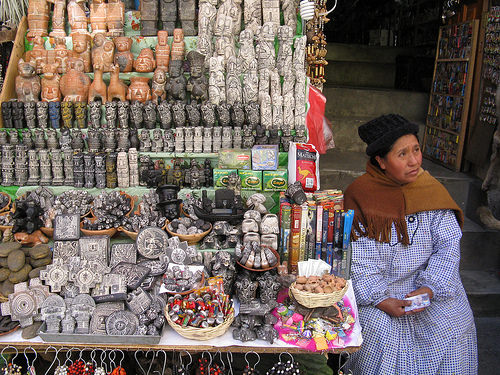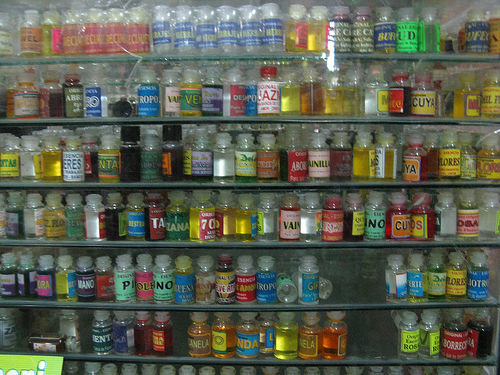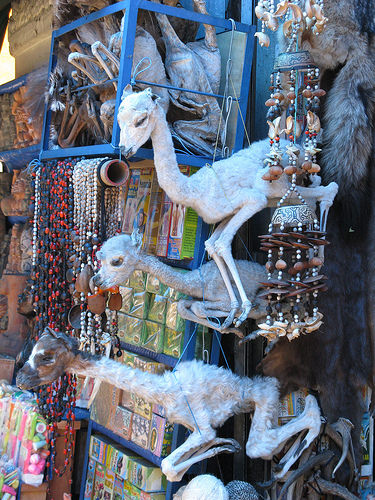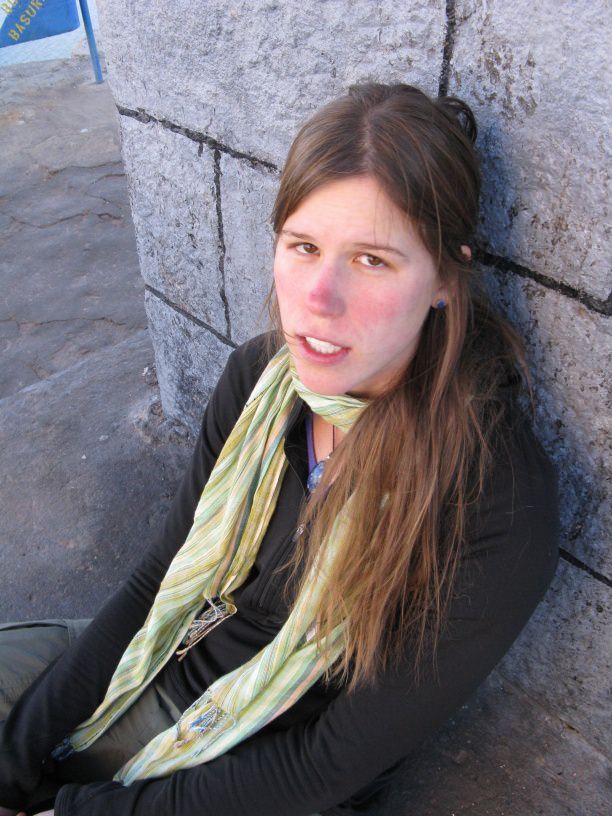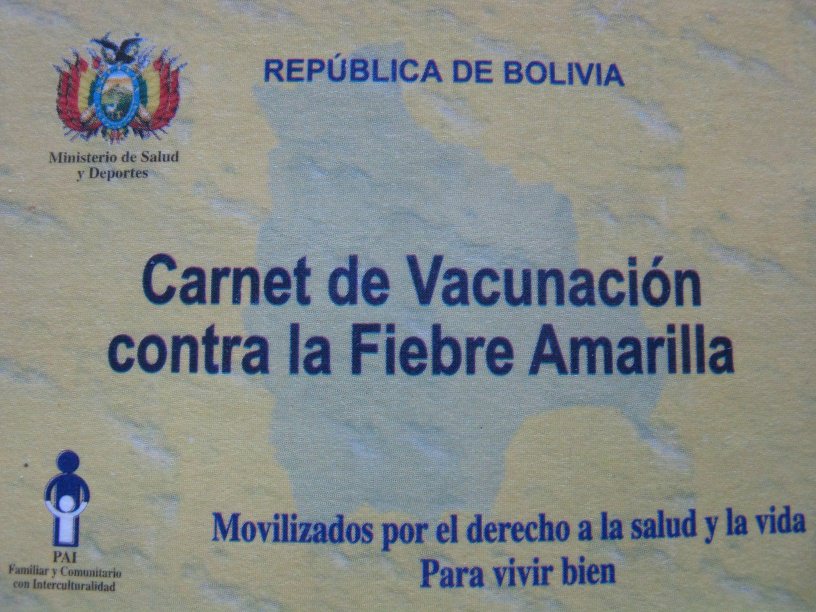Our jeep barreled for an entire day across the infinite nothingness of the Salar de Uyuni, the largest salt flat in the world. For six hours straight, we saw salt, we saw sky, and that’s about it.
 The salar is 4,633 square miles of packed salt that measures an average of 23 feet thick. It’s what remains of the prehistoric Lago Minchin, which once covered the majority of southwest Bolivia. It’s an illusion-inducing landscape that plays tricks on the mind, and it’s like nothing I’ve ever seen before.
The salar is 4,633 square miles of packed salt that measures an average of 23 feet thick. It’s what remains of the prehistoric Lago Minchin, which once covered the majority of southwest Bolivia. It’s an illusion-inducing landscape that plays tricks on the mind, and it’s like nothing I’ve ever seen before.
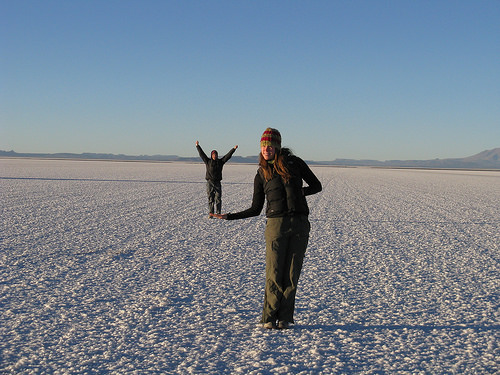 We discovered people become really small on the Salar de Uyuni
We discovered people become really small on the Salar de Uyuni
 And that doing ordinary things becomes much more fun
And that doing ordinary things becomes much more fun
Our three-day jeep trip took us from the Chilean desert town of San Pedro de Atacama to the Bolivian valley village of Tupiza. We crossed from the border during the first ten minutes of the trip, then proceeded through the baked red Bolivian desert, where geysers boil and steam, and lakes take on colors other than blue.
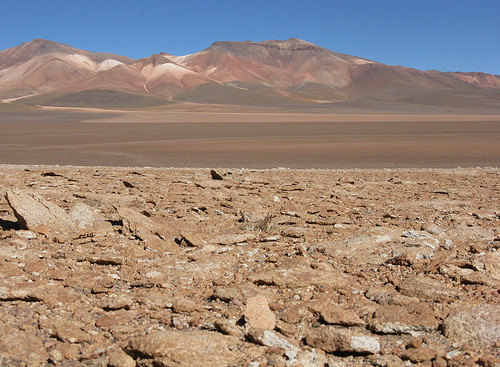 The Bolivian desert
The Bolivian desert
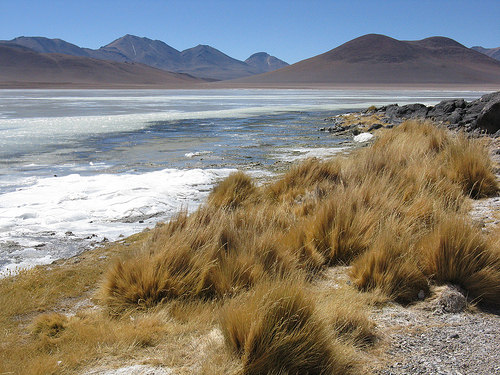 Lago Blanco, with waves frozen in place
Lago Blanco, with waves frozen in place
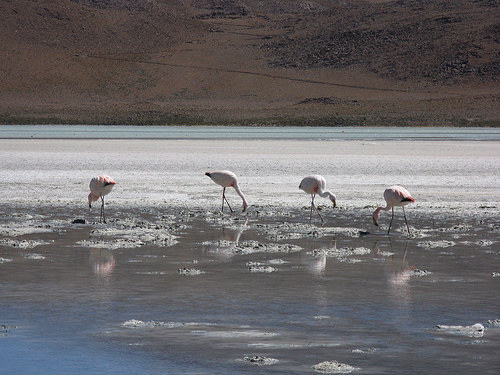 Flamingos wade knee-deep in many of the lakes, filtering for microorganisms
Flamingos wade knee-deep in many of the lakes, filtering for microorganisms
 The deserts’ elevation ranges between 12,000 and 15,000 feet above sea level. It’s extremity caused us to become short of breath every time we walked uphill and scramble for hats, gloves and extra layers every time got out of the jeep door to walk around outside.
The deserts’ elevation ranges between 12,000 and 15,000 feet above sea level. It’s extremity caused us to become short of breath every time we walked uphill and scramble for hats, gloves and extra layers every time got out of the jeep door to walk around outside.
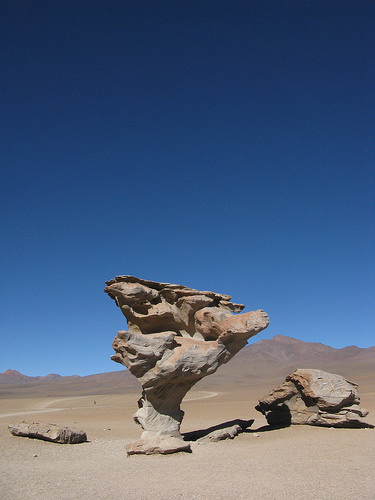 The rock tree, one of many rock formations we saw along the way
The rock tree, one of many rock formations we saw along the way
Simione, our Spanish-speaking driver, was born in a village just a couple hours from the salar and normally spoke the Quechua language native to the region. He stared straight ahead and chewed coca leaves during most of the drive, but at each stop, jumped out to pop the hood, scoot underneath the vehicle or change a tire. At one point, he had to repair the front passenger door, which had been ripped off by the wind.
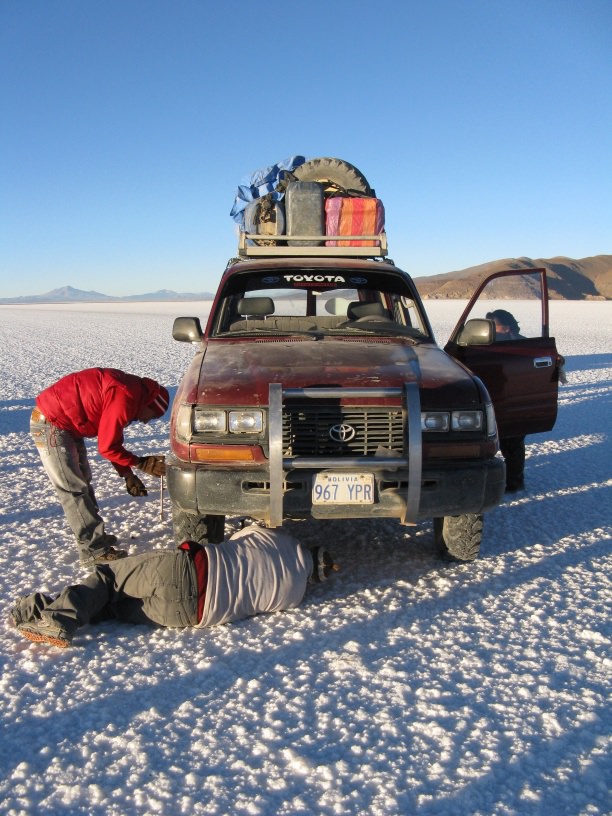 Simione and another driver operating on our jeep
Simione and another driver operating on our jeep
 Laura and me in a tiny town on the edge of the salar, waiting for our drivers to fill the vehicle with gas
Laura and me in a tiny town on the edge of the salar, waiting for our drivers to fill the vehicle with gas
We stayed the first night at a modest refuge in the desert and the second at the Salt Hotel, located two minutes from the edge of the salt flat. The hotel is constructed completely from blocks of salt; licking the walls, tables and stools would make you thirsty. Even the floor of the bedrooms and dining room was covered in grains of NaCl.
Two days before our trip, two jeeps traveling toward each other collided on the roadless, wide-open salt flat. The canisters of gas strapped to the roofs of both vehicles exploded, killing all passengers and one driver.
As we passed the accident remains from a distance, we could see the burnt hulls of two 4 x 4s standing out like dark skeletons against their snow-white surroundings. We all realized it could have been us, and the sight was truly sobering.
For more pictures of the trip, click here.
